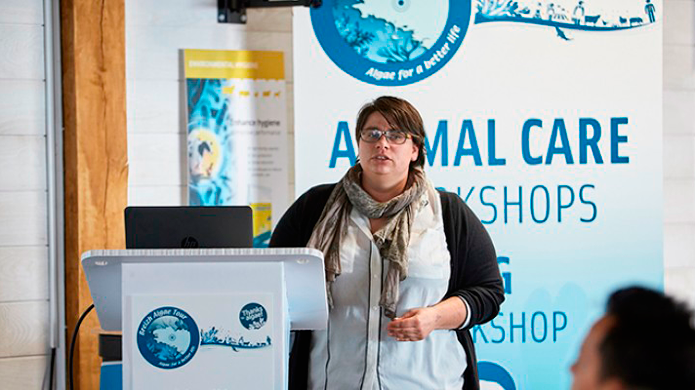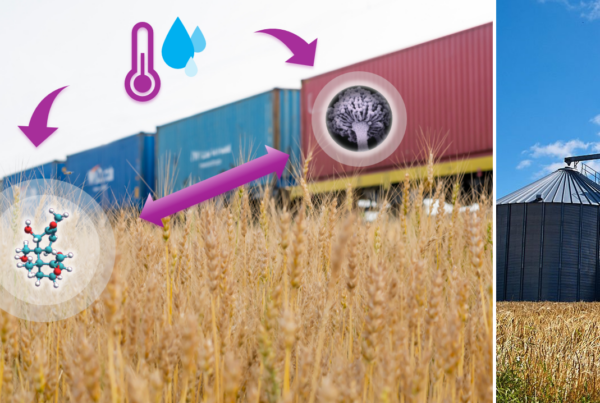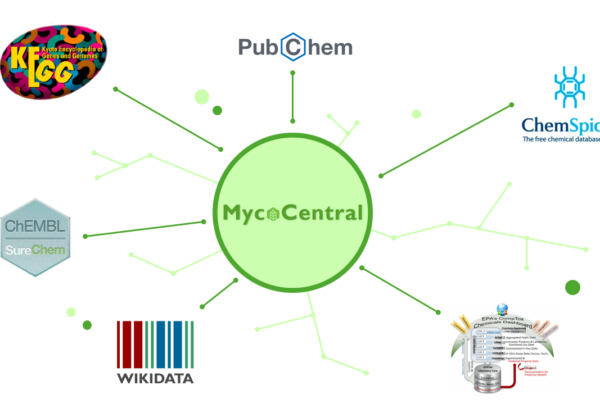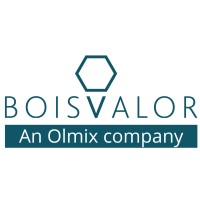Ms Frédérick Bussy, Olmix Group’s For Vet Specialist, describes how specific biological algae extracts can play a vital role when it comes to chick management in the farm.
Under the theme Facing the Future: Together Towards A Stronger Poultry Industry, the Philippines College of Poultry Practitioners successfully organized the 2020 Poultry School Online, a virtual event which counted on both the sponsorship and contribution by Olmix Group.
Ms Frédérick Bussy, Olmix’s For Vet Product Specialist now takes the lead again to answer some of the key questions raised during her speech at the event:
When it comes to chick management, what is the strategy to ensure a good start?
All of us know that “failing the starting period means failing the whole batch”. That’s why it’s important to take care of the following issues:
First of all, ensuring a good immune protection via the immune transfer from the breeder. But we should not forget about vaccines since more and more are administrated at hatchery and during the first week of age. Also, the brooding period is the time when the immune system of the chick is still under development. Secondly, we should look for better early intestinal development with a faster vitellus resorption and development of a balanced microbiota. And lastly, an adapted nutrition program according to the genetic request is also needed.

Ms Frédérick Bussy in a previous event.
What are the key points for a correct vaccine intake?
To ensure a good vaccine intake, several factors must be taken into consideration: DOC health, litter quality, ventilation and especially temperature, as chicks don’t have thermoregulation mechanism and thermal comfort is known to affect positively the initial development of chick. Besides, depending of the season the sanitary pressure is different: in rainy season respiratory troubles are increased compared to dry season. All this has an impact on vaccination programs.
What’s the role of the immune cells in the post-hatch development phase?
In birds, the immune system starts its development before hatching with the apparition of key immune cells showing up in the intestine before or right after hatching. For example, heterophils, corresponding to avian neutrophil, are predominant cells in the blood and the gastrointestinal tract of the chicks. When heterophil are activated, they produce immune mediator and reactive oxygen species. The second example that is important also for vaccine efficiency are gamma delta T cells, which in birds can represent up to 50% of the T lymphocytes. Gamma delta T cells are present in the blood and intestinal tract before hatching. They are in charge of the antibody response regulation and they act as a bridge between innate and acquired immunity.
What does the feeding have to do with immunity development?
Three mechanisms may be involved with the immune system changes due to nutrition immediately after hatching. First, feed brings nutriments which are essential for the development of lymphoid organs. Besides, a lack of feeding affects the levels of endogenous hormones and other immune modulators. And finally, the presence of antigens in gastrointestinal tract are important for a complete differentiation and maturation of immune system (lymphocytes).
”When it comes to chick management, ensuring a good immune protection via the immune transfer from the breeder is of utmost importance.
Frédérick Bussy
What are MSP® (Marine Sulphated Polysaccharides) and what are their properties?
Macroalgae cell wall contains large amounts of sulfated polysaccharides. Among the characteristics identified as important for the biological activity of these complex, algal polysaccharides are the presence of charged molecules, both via the presence of carboxylated sugars such as uronic acids within the carbohydrate chains, as well as the presence of sulfated groups in certain positions on the sugars.
Their structural variation is high, and they are based on repeating disaccharide units with different types of linkages within and between the disaccharides. In some of the algal polysaccharides, rare sugar units (fucose, iduronic acid, rhamnose) are represented. All together, these parameters show a structural similarity with polysaccharides from the animal kingdom such as heparin, which explains their unique biological properties. Their reactivity, hence their biological properties, varies according to the type of sugars and linkages, their level of sulfation and also their molecular weight. Therefore, fractions with distinct biological activities can be found in algae. Their specific extraction is a key to ensure a targeted effect on animals.
What’s the experience of Olmix with these MSP®?
Some of these polysaccharides can be extracted and purified for their immunomodulating properties. Olmix has worked on such extracts and the immunomodulating activity of its MSP®IMMUNITY was first evidenced on porcine intestinal epithelial cells in vitro (Berri et al., 2016). MSP®IMMUNITY activated the expression of several cytokines involved in the activation, recruitment and migration of lymphocytes, as well as heterophiles. Later, Guriec et al. demonstrated what MSP®IMMUNITY activates in vitro and in vivo avian heterophiles as well as gamma delta T lymphocytes. MSP®IMMUNITY may constitute a potential adjuvant in the design of mucosal vaccine approaches in order improve both innate and adaptive immunity.

Any results?
Based on the in vitro & in vivo results, the capacity of the algal extract MSP®IMMUNITY associated with vitamins in a product named Searup®, was tested for its potential as a new prophylactic strategy to activate the immune response of poultry in the frame of Newcastle vaccination programs in different commercial production conditions. In pullets, results showed a reduced coefficient of variation of the antibody titers in the test group compared to control, reflecting an improved vaccination efficacy. These results came along with a lower mortality in the Searup® group compared to control (respectively 1.35 and 2.29%).
In layers, the results were similar to those observed in pullets with lower coefficients of variation of the antibody titers in the Searup® group compared to control, as well as a global improvement in the zootechnical measurements and a significant increase in the total number of eggs per hen present (+0,8 eggs/ hen present).
In broilers, we observed the same improvement of the homogeneity of the CV in the Searup® group as obtained for pullets and layers. At D21 (after the first ND vaccination) the CV in the test group is significantly lower than in the control group and the improvement is maintained at D35 (after the booster).
Searup® thus provides a new way to improve immune system development and modulate the immune response around vaccination, viral challenge and stress.




